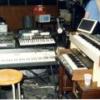About This File
This is a version of a nine tone layer organ similar to a B3 organ. I worked with a distinctly colored clone wheel to compare the PX-5S tones against. It will never be exact, but I think it is in the same zip code (perhaps the same ballpark if you use a Neo Vent) and could get you through a club gig if you don't have a clone wheel.
It contains two hex layers in Zones 1 and 2 and uses all twelve available layers. Only nine layers will sound on any one note presuming the sliders are all in the open position. Twelve layers are needed to simulate the duplicative use of the tone wheels in the B3 in the extreme ranges of the keyboard (see excerpt from Sound on Sound magazine Hugh Robjohns article below regarding this - link to full article http://www.soundonsound.com/sos/jul03/articles/hammondb3.asp). Zone 3 contains a truncated version of an organ tone to bring in the percussion. The key range of this Stage Setting is limited from C2 to C7 so keys above and below this level will be silent.
Slider/Knob settings:
Slider 1 controls the equivalent of the 16' and 8' drawbars.
Slider 2 controls the equivalent of the 4' and 2' drawbars.
Slider 3 controls the equivalent of the 5 1/3' and 2 2/3' drawbars.
Slider 4 controls the equivalent of the 1 3/5' drawbar.
Slider 5 controls the equivalent of the 1 1/3' drawbar.
Slider 6 controls the equivalent of the 1' drawbar.
Knob 1 controls the distortion level.
Knob 2 controls the vibrato/chorus setting.
Knob 3 controls 3rd percussion.
Knob 4 controls reverb.
Mod wheel and Pedal 1 toggle rotary speed.
"The New B3 has 96 digital tonewheel generators whereas the original B3 (and its siblings) had 91 active tonewheels (although there were actually 96 physical wheels in the generator, the unused ones being there to maintain the mechanical balance). However, if you do the sums, you'll find that there are actually 109 different tones required to produce nine harmonics on a 61-note keyboard. The original Hammonds overcame this problem by cheating — partial octaves were repeated at the top end of the keyboard, the repeating starting on different notes and octaves depending on the drawbar. On a stock B3 the 2-foot drawbar repeats only the top 'C' from the octave below, while the 1-foot drawbar repeats an octave and a half starting from the 'G', and the intermediate drawbars start repeating somewhere in between. This arrangement is usually referred to as 'fold-down' and it is an essential element of the subtle but characteristic tonal quality of the B3 and its siblings."
What's New in Version 1.06 See changelog
Released
- Changed Hammer Response to "0" per Mike Martin's suggestion.

